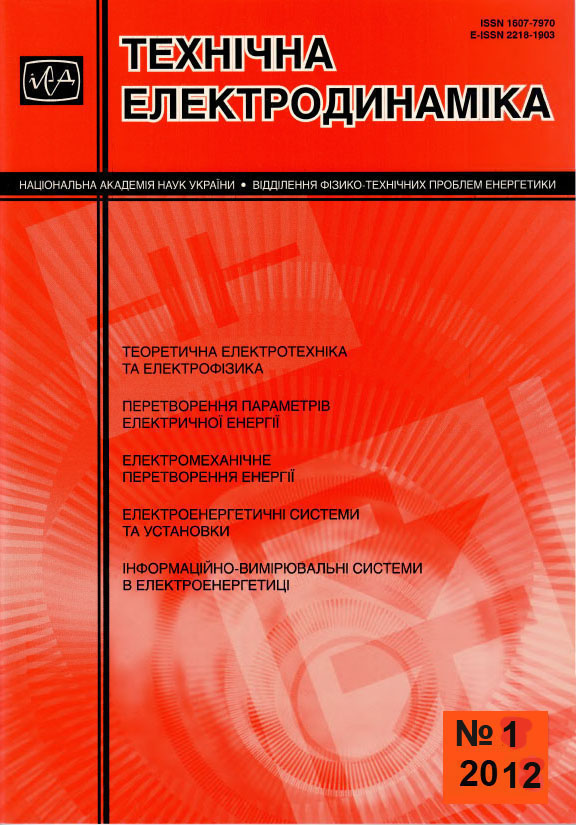Анотація
Рассмотрены системы, содержащие электромагнитные экраны сложной пространственной конфигурации. Получены численные зависимости, позволяющие выбирать параметры электромагнитных экранов в зависимости от требуемой величины эффективности экранирования. Показано, как за счет изменения конфигурации и числа слоев экрана можно добиться эффективного экранирования различных зон в зависимости от их расположения относительно токовых источников. Библ. 10. табл. 3. рис. 5.
Посилання
Koshliakov N.C., Gliner E.B., Smirnov M.M. Equestions in partial derivatives of mathematical phisics. – Moskva: Vysshaya shkola, 1970. – 710 p. (Rus)
Rezinkina M.M. Using of numerical calculations for choice of screening means against magnetic field action // Zhurnal Tekhnicheskoi Fiziki. – 2007. – Vol. 77. – No 11. – Pp. 17–24. (Rus)
Rezinkina M.M. Numerical calculation low-frequency magnetic field in screening means // Tekhnichna elektrodynamika. – 2008. – No 6. – Pp. 18–23. (Rus)
Samarskii A.A. Difference scheme theory. – Moskva: Nauka, 1989. – 616 p. (Rus)
Stretton J. A. Electromagnetic theory. – Moskva-Leningrad: OGIZ Gostechizdat, 1948. – 539 p. (Rus)
Tozoni O.V. Secondary power supply method in electrical engineering. – Moskva: Energiya, 1975. – 295 p. (Rus)
Shapiro D.N. Basis of electromagnetic screening. – Leningrad: Energiia, 1975. – 109 p. (Rus)
Clemens M., Weiland T. Regularization of Eddy Current Formulations Using Discrete Grad-Div Operators // IEEE Trans. on Magnetics. 2002. Vol. 38. No 2. Pp. 569-572.
Clemens M., Wilke M., Weiland T. Linear-Implicit Time Integration Schemes for Error-Controlled Transient Nonlinear Magnetic Field Simulations // IEEE Transactions on Magnetics. 2003. Vol. 39. No 3. Pp. 1175-1178.
Taflove A., Hagness S. Computational electrodynamics: the finite difference time domain method. Boston – London: Artech House, 2000. 852 p.

Ця робота ліцензується відповідно до Creative Commons Attribution-NonCommercial-NoDerivatives 4.0 International License.
Авторське право (c) 2023 ТЕХНІЧНА ЕЛЕКТРОДИНАМІКА

